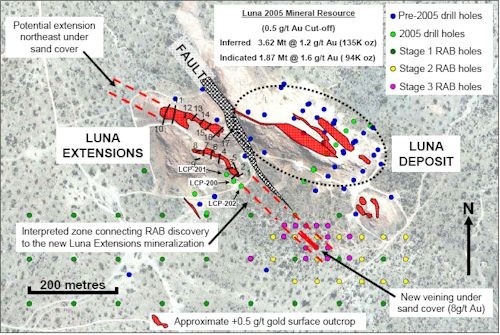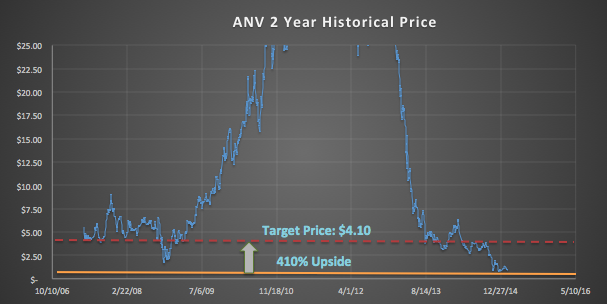How to evaluate gold & silver mining companies
Post on: 16 Март, 2015 No Comment

The traditional methods for analyzing the value of a company are not particularly helpful when they are applied to precious metals miners. This article looks at the way gold and silver miners classify their mineral resources and how this information can be used to help evaluate mining companies that are in production.
Classification of reserves
Gold and silver companies follow an industry standard for the classification of their mineral resources known as National Instrument (NI) 43-101. The rule, which was developed by the Canadian Securities Administrators (CSA), governs how listed companies disclose scientific and technical information about their mineral projects to the public.
There are two main types of resource classification with which investors need to be familiar. These are: mineral resources and mineral reserves.
These classifications are both divided into subcategories based on the quality and amount of work that has been done to verify the quantity of minerals available together with the economic viability of extracting them.
A mineral resource is defined as a concentration or occurrence of minerals in or on the Earth’s crust in such form and quantity, and of such a grade or quality, that it has reasonable prospects for economic extraction. The three different types of mineral resource classification are: Inferred Mineral Resources, Indicated Mineral Resources and Measured Mineral Resources.
Mineral reserves are defined as the economically mineable part of a measured or indicated mineral resource demonstrated by at least a preliminary feasibility study. There are two different types of mineral reserve classifications: Probable Mineral Reserves and Proven Mineral Reserves .
Probable and Proven reserves are the economically mineable part of a measured mineral resource, and they must be demonstrated by at least a preliminary feasibility study. This Study must include adequate information on mining, processing, metallurgical, economic, and other relevant factors that demonstrate that economic extraction is justified.
How to evaluate gold & silver mining companies
All gold and silver mining companies produce exactly the same product, i.e. ounces of gold and silver, and they sell their ounces at the same market price. This is the one thing that is constant between every miner. Everything else about these companies – location, geology, metallurgy, business model, cash flow, the management team, etc. – is different. The question for investors is, how do you evaluate these companies so that you know which ones to buy?
Most analysts that work for major brokerage houses run Net Asset Value (NAV) analysis. This determines the net asset value of the company based on a forecast for of the future price of gold. However, since gold stocks trade at a premium to NAV, the analyst then has to try to work out what the correct premium above NAV should be. This technique together with other traditional valuation methods such as the Price-To-Book Ratio, Price-To-Sales Ratio or P/E ratio simply don’t serve you well when valuing gold stocks.
A better technique, and one used by John Doody, author of the excellent Gold Stock Analyst newsletter, is to calculate how the market is valuing each ounce of gold or silver a company has. Calculating these valuation metrics for several companies reveals there relative value and makes stock selection a great deal easier.
Market cap per ounce of production
Since all of the gold companies sell ounces of gold, one of the key differentiators is the cost of producing these ounces. And the same is true for silver companies.
The market cap per ounce of production can be calculated by taking a company’s market cap (which is the share price multiplied by the number of shares outstanding), and dividing it by their current annual production.
Example: Yamana Gold, currently the largest non-royalty precious metals producer in the 247Bull Investment Portfolio. has a market cap of 10,938 million and gold production in 2013 is estimated to be between 1.480 and 1.660 million ounces.* Therefore, if we take the middle of this production estimate, the company has a market cap per ounce of production of 6,967.
Barrick Gold, meanwhile, which has a market cap of 27,059.96 million and a 2013 production forecast of 7.4 million ounces, has a market cap per ounce of production of 3,657.
This first metric tells us that the market thinks Yamana’s ounces are worth more than those produced by Barrick.
*Ounces are GEO (gold equivalent ounces). GEO calculations include silver production as a gold equivalent at a ratio of 50:1
Market cap per ounce of reserves
The market cap per ounce of reserves is calculated by taking a company’s market cap, and dividing it by their current reserves. However, the calculation must to use only those reserves in the Probable or Proven category. This is because, resources defined as Measured, Indicated or Inferred may never be converted into economically mineable reserves, and therefore the US Securities and Exchange Commission (SEC), prohibits mining companies from using them in their official filings.
Example: Yamana Gold, has Probable or Proven reserves of 18.6 million ounces. It therefore has a market cap per ounce of reserves of 588 (10,938 / 18.6).
Barrick has 140.2 million ounces of reserves in the Probable or Proven category, and therefore has a market cap per ounce of reserves of 193.

Again we can see that the market is placing a higher value on Yamana’s reserves than it is on those held by Barrick.
Operating cash flow multiple
The operating cash flow multiple reveals how the market values profitable production. It is calculated by dividing a company’s market cap by its Operating Cash Flow (OCF). The calculation for OCF is: Gold price cash cost per ounce of production x forecast annual production.
Example: Yamana’s OCF is $1,727million ($1,600 $500 x 1.57 ounces). The company’s operating cash flow multiple is therefore 6.33 (10,938 / $1,727).
The same calculation for Barrick reveals that its operating cash flow multiple is 3.28.
All three of these metrics show that the market is placing a higher value on Yamana than it is on Barrick, and with good reason. In 2012 Yamana produced 1.2 million GEO, however by 2014 the company expects to be able to sustain production of 1.75 million ounces, and this production growth is important.
By contrast, in 2012 Barrick produced 7.4 million ounces of gold, but its production forecast for 2013 is between 7.0-7.4 million ounces, and it’s cash cost is expected to rise from $584 to between $610 and $660 per ounce.
Over the past few quarters Barrick has reported large capital cost over-runs whilst also lowering its long-term production outlook. The company’s long-term production goal had previously been 9 million ounces, however its production in 2015 is now expected to be a little over 8 million ounces.
The ability to grow production, whilst also maintaining a low cash cost, is key to a company’s future earnings and therefore its future stock valuation.
It is also vital to choose companies that operate in politically safe jurisdictions, and that have experienced management teams that are focused on delivering shareholder value.
In today’s low interest rate environment, returning money to shareholders in the form of dividends has also become important to shareholders.
The next article will evaluate several companies to order to find those that offer both excellent value and excellent prospects.














